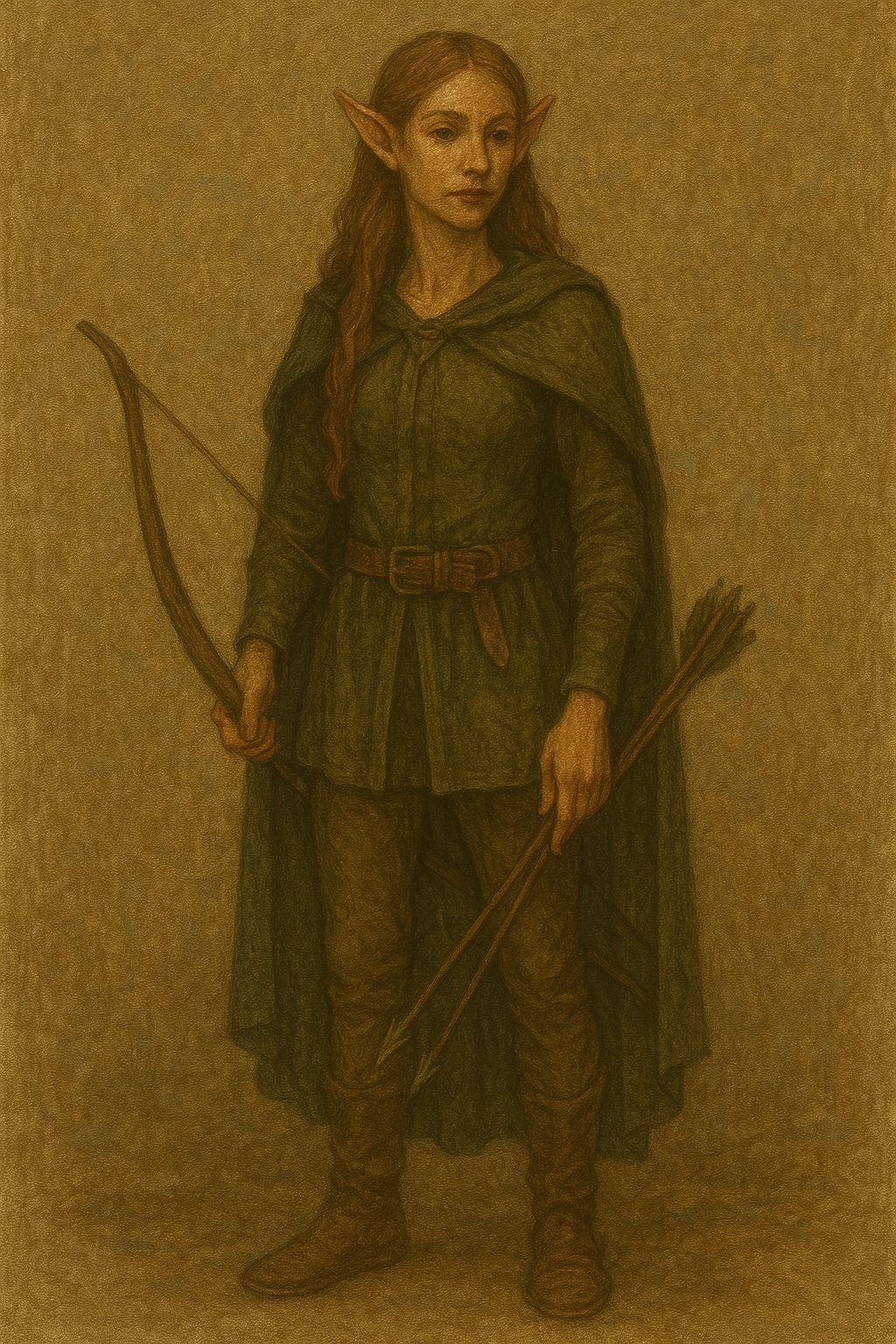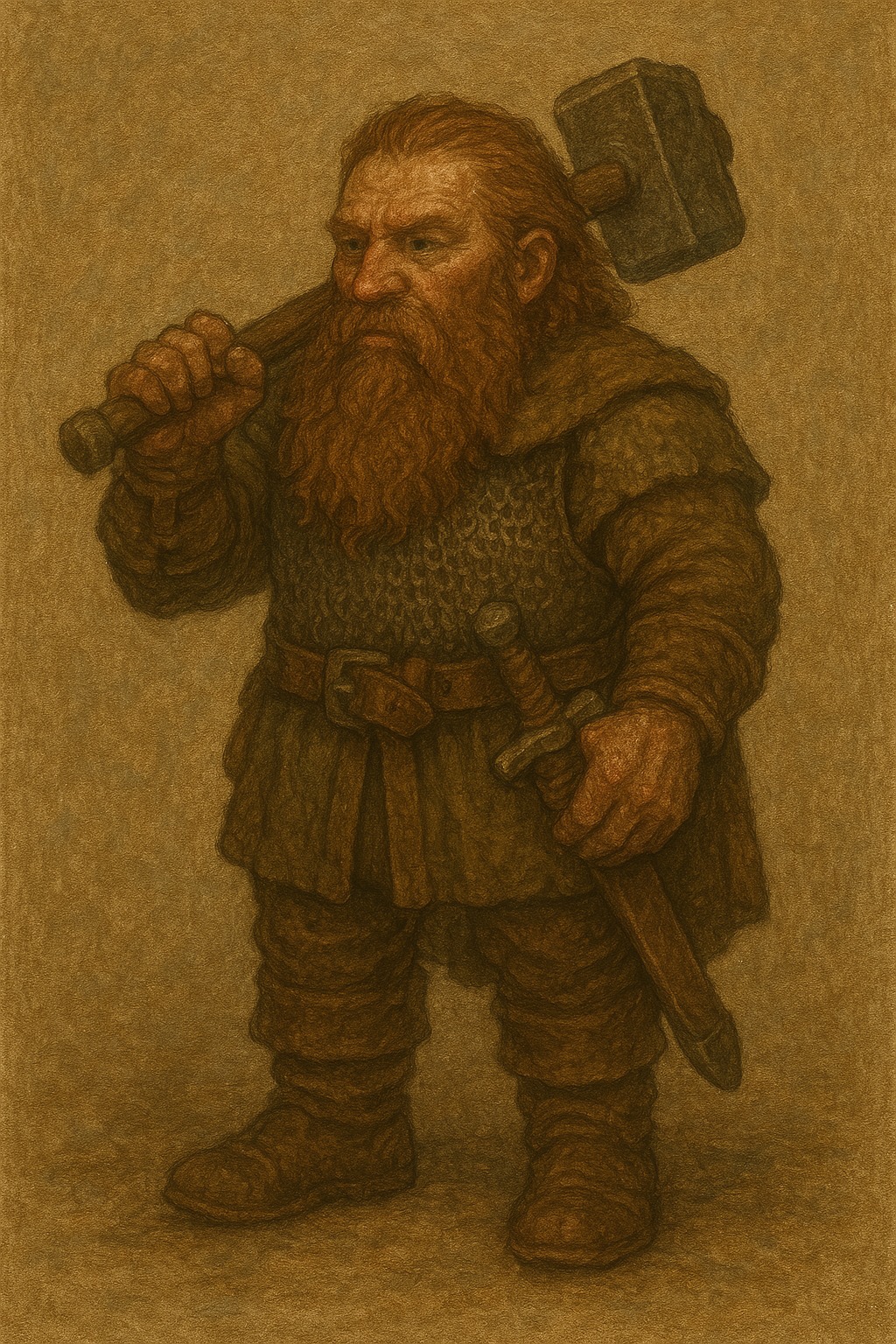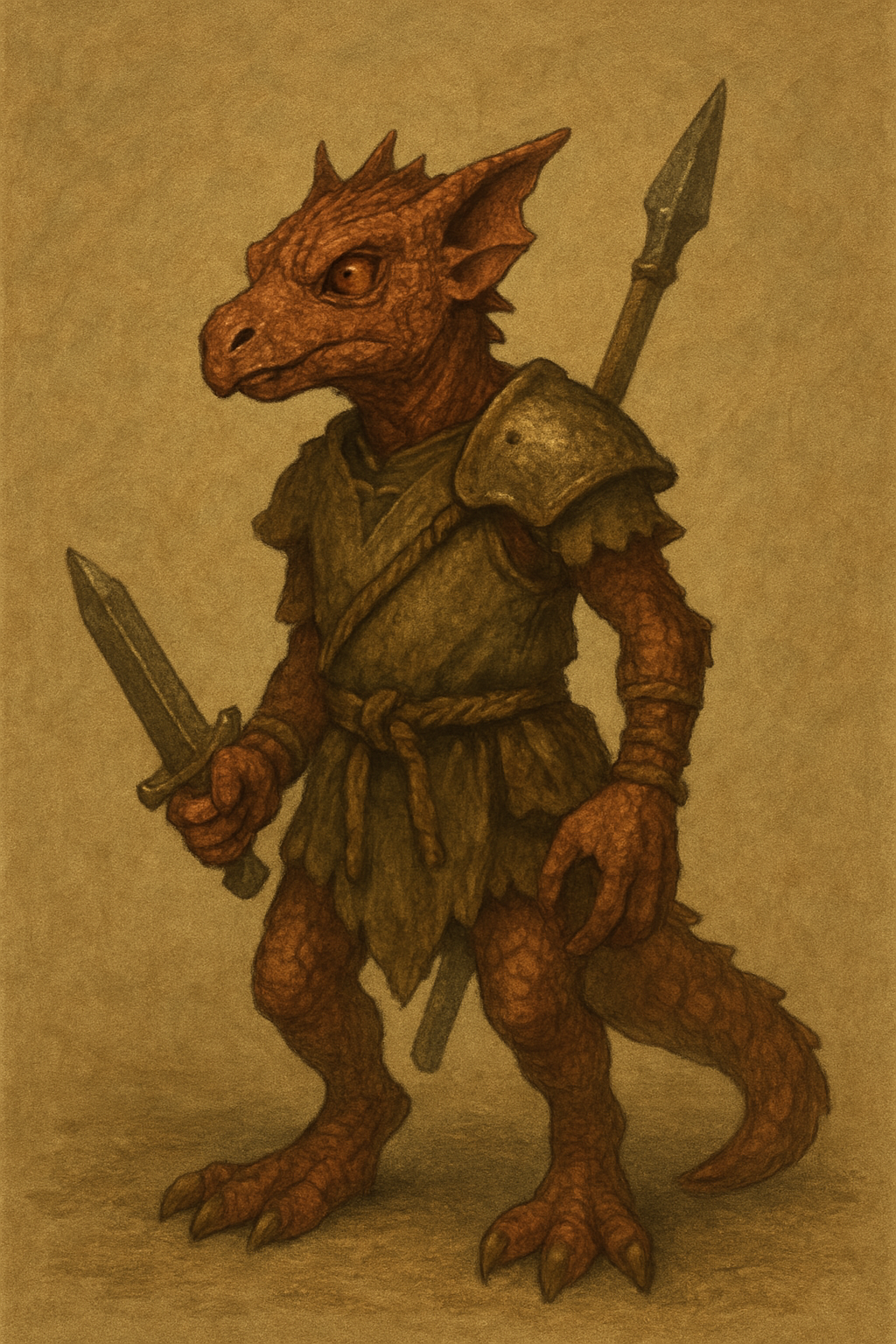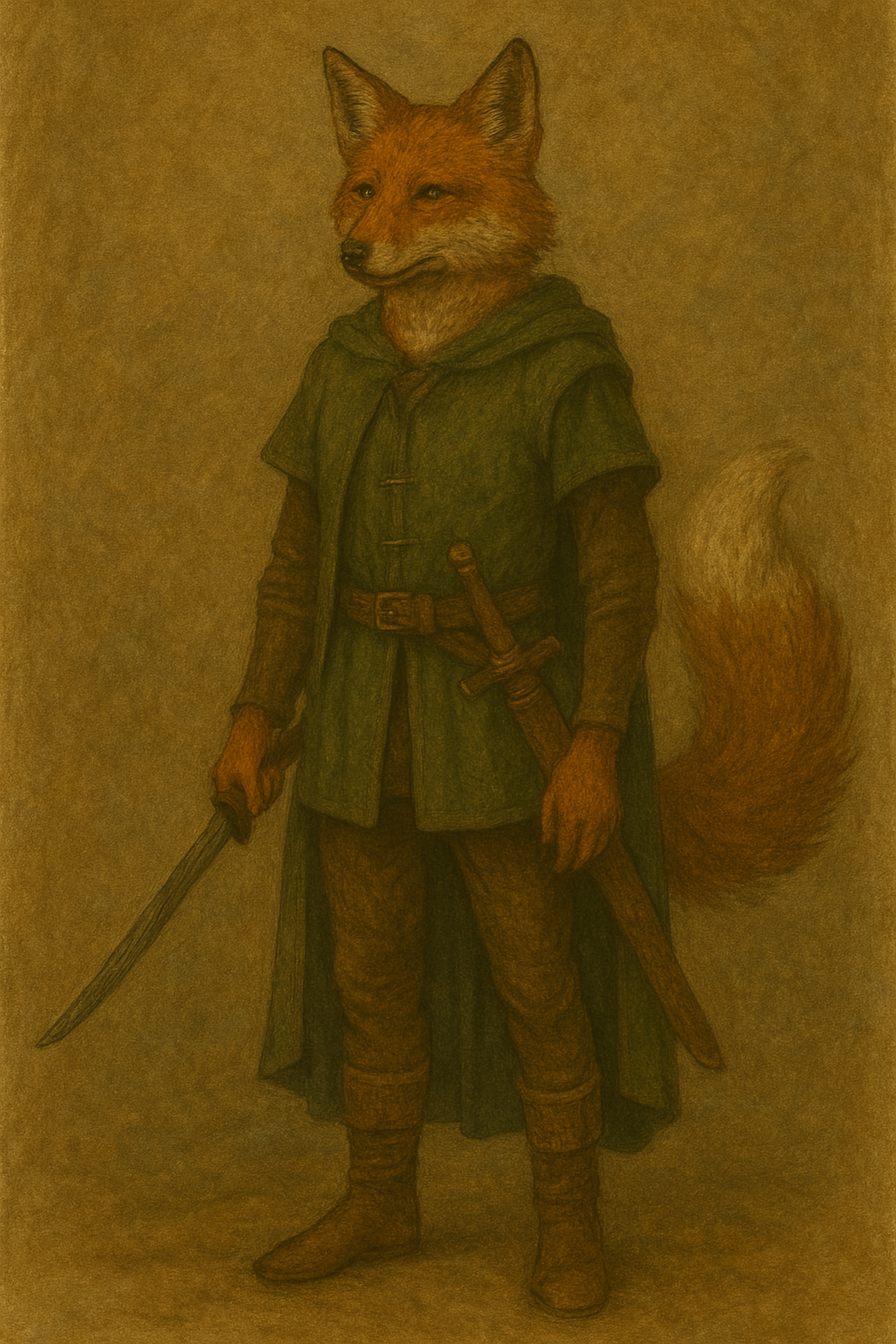Rulebook
Common Races of Valoria
Valoria is home to diverse peoples, each with their own unique cultures, traditions, and innate abilities. While many races exist throughout the realm, five are most commonly encountered by adventurers.
HHumans

Racial Ability: Adaptable
Once per session, a human character may add +1 die to any skill check. This represents their remarkable ability to adapt to new situations and challenges.
Humans are the most numerous and widespread race in Valoria, found in nearly every corner of the realm. Their societies are as diverse as their appearances, ranging from the scholarly city-states of the Heartlands to the nomadic tribes of the Eastern Shores.
Physical Characteristics
Humans display the greatest physical diversity among all races. They typically stand between 5'5" and 6'2" tall, with skin tones ranging from pale to deep brown, and hair and eye colors in various natural hues. They reach physical maturity around age 18 and typically live 70-90 years.
Culture and Society
Human societies value innovation, ambition, and progress. Their relatively short lifespans compared to elves or dwarves drive them to accomplish much in their limited years. Human settlements range from small farming villages to massive walled cities, and their governments span from monarchies to republics to tribal councils.
Outlook and Personality
Humans are characterized by their adaptability and ambition. They tend to be curious, resourceful, and driven to leave their mark on the world. This ambition can manifest as heroic self-sacrifice or ruthless conquest, making humans capable of both the greatest good and the most terrible evil among the races of Valoria.
EElves

Racial Ability: Keen Senses
Elves gain +1 die on all Perception checks. Their heightened senses allow them to notice details that others might miss, making them exceptional scouts and hunters.
Elves are an ancient race with deep connections to the natural world, particularly the forests of the Western Wilds. Their long lifespans give them a perspective that shorter-lived races often find difficult to comprehend.
Physical Characteristics
Elves are slender and graceful, standing between 5'6" and 6'2" tall. They have pointed ears, angular features, and almond-shaped eyes that often shine with an inner light. Their hair colors range from silver-white to deep black, with various shades of blonde and brown in between. Elves reach physical maturity around age 20 but aren't considered culturally adult until nearly a century old. They can live up to 750 years.
Culture and Society
Elven society values harmony, beauty, and tradition. Their settlements are built to complement the natural environment rather than dominate it, often incorporating living trees and natural formations. Elven governance typically consists of councils of elders, with the oldest and wisest holding positions of respect and authority.
Outlook and Personality
Elves tend to be contemplative, patient, and deliberate in their actions. Their long lifespans give them a perspective that can seem detached or aloof to shorter-lived races. They value art, music, and poetry highly, seeing these as ways to capture and preserve the beauty of the world. Many elves struggle with the concept of urgency, which can frustrate their more time-conscious companions.
DDwarves

Racial Ability: Stone Resilience
Dwarves reduce all physical damage taken by 1 (to a minimum of 1). Their sturdy frames and natural toughness make them exceptionally durable in combat.
Dwarves are a sturdy folk who make their homes primarily in the Northern Reaches, carving vast halls and cities beneath the mountains. They are renowned for their craftsmanship, particularly in metalworking and stonecraft.
Physical Characteristics
Dwarves are stocky and muscular, typically standing between 4'0" and 4'8" tall. They have broad shoulders, thick bones, and tend toward stoutness. Most dwarven men grow elaborate beards which they take great pride in, often braiding them and adorning them with metal clasps and jewels. Dwarves mature at roughly the same rate as humans but live considerably longer, often reaching 350-400 years.
Culture and Society
Dwarven society is built around clan structures, with family lineage being of paramount importance. They value tradition, craftsmanship, and honor above all else. Dwarven settlements are architectural marvels, featuring grand halls carved from living stone and elaborate mechanisms. Their governance typically follows hereditary lines, with clan chiefs or kings ruling with the counsel of elder craftmasters.
Outlook and Personality
Dwarves tend to be steadfast, practical, and direct. They value honesty and plain speaking, often to the point of bluntness. A dwarf's word is their bond, and oaths are never given lightly. They have long memories for both friends and enemies, with grudges and debts sometimes lasting generations. Despite their sometimes gruff exterior, dwarves are deeply loyal to their friends and can be boisterous and merry in comfortable company.
KKobolds

Racial Ability: Trap Sense
Kobolds gain +1 die on checks to detect, disarm, or create traps. Additionally, they can see in darkness up to 30 feet as if it were dim light, though they cannot discern color in darkness.
Kobolds are small, reptilian humanoids with distant draconic ancestry. Once dismissed as mere pests, kobold communities have increasingly integrated with other races, particularly in mining towns and trading hubs where their skills are valued.
Physical Characteristics
Kobolds stand between 2'6" and 3'2" tall, with slender, scaled bodies and reptilian features. Their scales range in color from rusty brown to bright red, deep blue, or dull green. They have pronounced snouts, small horns, and long, thin tails. Kobolds mature quickly, reaching adulthood by age 6, and typically live 60-80 years.
Culture and Society
Kobold society is communal and industrious, with each member contributing to the group's survival. Traditional kobold warrens are elaborate networks of tunnels and chambers, often incorporating clever traps and escape routes. In recent generations, some kobold communities have emerged from their underground homes to establish more open relations with other races, though they still prefer tight-knit, densely populated settlements.
Outlook and Personality
Kobolds are inventive, cautious, and surprisingly resilient. They approach problems from unexpected angles, creating innovative solutions with limited resources. While traditionally fearful of larger races, modern kobolds are increasingly confident, though they still prefer to have escape routes planned. They have a natural talent for engineering, mining, and trapmaking, with many finding work as tinkers, jewelers, or security experts.
KKitsune

Racial Ability: Shapechanger
Kitsune can shift between their natural fox-humanoid form and a full fox form as an action. In fox form, they gain +1 die to Stealth checks but cannot use weapons or cast spells requiring verbal components. They retain their intelligence and awareness in either form.
Kitsune are fox-folk with natural shapeshifting abilities and an affinity for illusion magic. They originate from the Eastern Shores but have spread throughout Valoria, often living at the edges of human settlements or in their own secluded communities.
Physical Characteristics
In their natural form, kitsune appear as humanoids with distinct fox-like features: pointed ears, slitted pupils, sharp canines, and one to nine tails depending on their age and power. Their fur/hair ranges from red-orange to white, black, or silver. They stand between 5'0" and 5'8" tall with slender, agile builds. Kitsune mature at a rate similar to humans but can live up to 200 years, with the oldest and most powerful reaching 900 years.
Culture and Society
Kitsune society values cleverness, adaptability, and harmony with nature. Their communities are typically small and semi-nomadic, though some have established permanent settlements, particularly near magical nexus points. Kitsune governance is informal, with respected elders and those with more tails providing guidance rather than strict leadership.
Outlook and Personality
Kitsune tend to be curious, playful, and somewhat mischievous. They enjoy riddles, games of wit, and good-natured pranks. While they can be tricksters, most kitsune follow a personal code that prevents their mischief from causing real harm. They have a natural affinity for illusion magic and often approach problems indirectly, preferring cleverness over brute force. Many kitsune are drawn to lives of adventure out of curiosity about the wider world.
Racial Relations
The five common races of Valoria coexist in varying degrees of harmony and tension, with relationships shaped by history, culture, and individual experiences.
Humans and Elves
Relations between humans and elves are generally positive but sometimes strained by different perspectives on time and progress. Humans often find elves frustratingly slow to act, while elves view humans as hasty and short-sighted. Despite these differences, the two races frequently trade and ally against common threats.
Humans and Dwarves
Humans and dwarves maintain strong trade relationships, with dwarven craftsmanship highly valued in human markets. The races respect each other's skills and often form lasting friendships, though cultural misunderstandings occasionally arise.
Elves and Dwarves
Traditional rivals with different values and lifestyles, elves and dwarves have a complex relationship marked by both respect and irritation. They recognize each other's strengths but often disagree on approaches to problems. In recent generations, increased trade and shared threats have improved relations.
Kobolds and Other Races
Once viewed with suspicion or hostility, kobolds have gradually earned acceptance through their useful skills and willingness to trade. They maintain the best relations with humans and dwarves, who value their mining and engineering talents. Relations with elves remain somewhat strained due to territorial disputes in forest regions.
Kitsune and Other Races
Kitsune are generally welcomed in most communities, though their reputation for trickery sometimes causes wariness. They get along particularly well with elves, sharing a connection to nature and magic. Their relationships with humans vary widely by region, ranging from close integration to cautious separation.
Mixed Communities
Major cities and trading hubs throughout Valoria are increasingly diverse, with all five races living and working together. These cosmopolitan centers are often at the forefront of cultural exchange and innovation, though they can also be flashpoints for racial tensions during times of stress or scarcity.